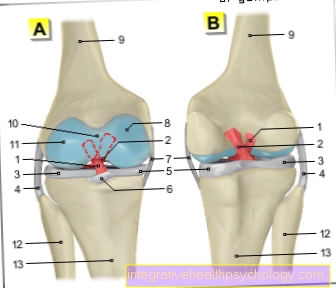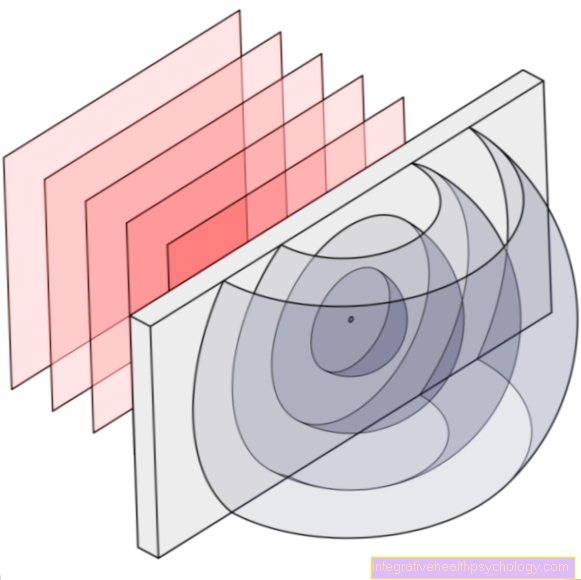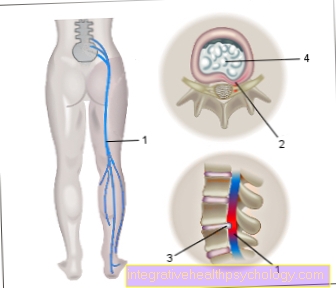Triathlon
Synonyms in a broader sense
Endurance, swimming, cycling, running, jogging, marathon
definition
The aim of the triathlon is to leave a defined distance in swimming, cycling and running behind in the shortest possible time.
The triathlon is much more than just doing this route once, it requires months of targeted preparation.
Through continuous training for a triathlon, most athletes have the fiber for endurance sports and thus the triathlon becomes more than just a sport, but not in rare cases increases the quality of life.
history
The origins of the triathlon are around 1920. In France, the first triathlon was held at Joinville le Pont under the name "les trois sports".
It consisted of 12 km cycling, 3 km running and crossing the river "Marne".
However, today's triathlon first became popular in 1974 in the USA (California) as a discipline with 10 km running, 6 km cycling and 500 m swimming. Probably the most spectacular form of triathlon is the Iron Man in Hawaii, with a swim distance of 3.84 km, bike distance of 180 km and a running distance of 42.195 km. To this day he is not accepted by the ITU. Due to the fitness trend of the 80s, the triathlon finally found its way into popular sport and more and more enthusiastic amateur athletes and ambitious amateur athletes are trying their hand at this discipline.
Forms of triathlon
Popular triathlon:
- 500 m swimming
- 20 km cycling
- 5 km run
ITU short distance:
- 1.5 km swimming
- 40 km cycling
- 10 km run
Middle distance:
- 2 km swim
- 80 km cycling
- 20 km run
Half-IronMan:
- 1.9 km swim
- 90 km cycling
- 21.1 km run
ITU long distance:
- 3 km swim
- 80 km cycling
- 20 km run
IronMan:
- 3.8 km swim
- 180 km cycling
- 42.195 km run
requirements

For swimmer the only endurance performance that counts is the laps that are completed in the pool. Cyclist consider their sport to be the most strenuous endurance sport and runner only see the real one while walking Endurance sports.
Of the Triathlete embodies all these endurance types in one, and for that reason alone this discipline is considered the supreme discipline among endurance sports. Since no exact distance is given in a triathlon, beginners should start with a popular or short triathlon.
Anyone who has decided to take part in a triathlon should have a solid basic endurance (10 km - run in 50 minutes). The techniques of the individual discipline are assumed. However, the most important prerequisite for deciding on a triathlon is the basic attitude that you need for training. Especially with Triathlon the training effort is particularly high, as the change between the endurance disciplines in training is particularly important. A bicycle ergometer is highly recommended for training for a triathlon, especially if training outdoors is not always and everywhere possible.
The procurement of materials (bicycles) also represents a financial contribution.
Energy supply
In order to be able to design the training for a triathlon effectively, the knowledge of the energy supply is of fundamental importance. The distance that is swum, driven and run in a triathlon is less of a problem than changing the types of exercise. Especially after cycling, running is much more difficult. Training for a triathlon therefore not only aims to improve the individual disciplines on their own, but especially to improve the change in the stressed muscles. Running a marathon is essentially easier because the rhythm is much easier to find than running a triathlon. In a triathlon, the change in the type of exercise inevitably leads to a change in the energy supply. The muscle has 3 different types available for its endurance work:
- If the body needs a lot of energy in a short period of time (for intermediate sprint, final sprint), the muscle makes use of the carbohydrate storage (sugar / glucose) and burns this carbohydrate without oxygen (O2). This leads to an accumulation of lactate, which leads to an uncomfortable feeling in the muscles. One speaks of hyperacidity.
- With less strenuous work (heart rate individually between 120-150), the body also synthesizes its energy from the carbohydrates, but this happens with the consumption of oxygen. This is the energy range necessary for endurance performance such as Marathon or triathlon is paramount. So that the body can be supplied with sufficient carbohydrates, training must aim to increase this memory and replenish it with the right supply of nutrients.
- The provision of energy through fat burning (fat utilization) becomes important during sporting activities, if body fat is to be burned through training, or the storage for the carbohydrates has been completely emptied through sporting performance. The latter is often the undoing of endurance athletes in competitions, as the energy provided is not sufficient for burning fat. The consequences of this are a reduction in the running speed or termination. This type of energy supply can and must also be improved through training.
For triathlon training, it is particularly important to switch between the 3 types of energy supply when training. Targeted interval training can be used here.
Training planning
Anyone who designs their training in triathlon so that the individual disciplines are trained in isolation will have to contend with many problems in competition. Therefore, the switch between the disciplines is trained to a special degree, which increases the scope of the training considerably and often turns out to be very problematic. Since most triathletes switch from a single endurance sport to triathlon, every athlete has a discipline in which he is specially trained. This also applies to recreational athletes, who often show their best potential in running. It is therefore all the more important to pay special attention to cycling and swimming. At the beginning of the training, beginners can and should train the disciplines separately from one another until a solid endurance level is achieved in all areas. In terms of numbers, this should roughly correspond to the times that you will aim for later in the triathlon. In the further course of the training, there must be an immediate change in training between the disciplines. Since countless individual factors play a role in training for a triathlon, it is practically impossible to create a universal training plan. Those who follow the training rules for triathlon training will find their personal training plan very quickly.
nutrition
1. Nutrition in the training phase
Diet plays a special, but often overlooked, important role in triathlon, especially in competitions with longer distances. As already described from the provision of energy, endurance is a matter of burning energy. On the one hand, the energy stores should be exhausted as efficiently as possible (training); on the other hand, the body's own energy stores can and must be increased. However, this can only be done if the diet is optimally adapted to the training. This means nothing other than a replenishment of the Carbohydrate storage before the training. (The carbohydrate stores should be completely replenished approx. 4-5 hours before a training session. This replenishment can be done with pasta, rice, potatoes ...). It is also important to ensure that the burned carbohydrates must be replenished even after training.
2. Pre-competition nutrition
For the success of a triathlon, food intake immediately before the competition is also of great importance. Since a triathlon is about long-term endurance stress, the carbohydrate intake is crucial. 24-48 hours before the competition, the diet must be designed in such a way that the carbohydrate stores are completely replenished at the start of the competition. Avoid protein and fat-rich food on the evening before the competition. Also carbohydrate-rich food 4-5 hours before the competition. Also the inclusion of L-carnitine and Creatine is used more and more frequently in endurance sports.
The "Carb loading“(Carbohydrate Fattening) is a form of diet that is divided into two stages. In the first phase, you completely do without carbohydrates. In addition, you do intensive training so that the body's carbohydrate stores are completely emptied. In a second phase, about 3 days before the marathon, the emptied reservoirs are completely filled (loading). It is hoped that this will lead to an increased accumulation of carbohydrates. This form of nutrition is very controversial, as illnesses (colds and stomach problems) often occur here.
3. Nutrition during the competition
Depending on the competition distance, most triathletes complete the distance without additional food. In the case of prolonged exposure, food should be supplied in the form of simple sugars (monosaccharides / grape sugar, energy bars, bananas, etc.). These can be quickly synthesized by the body and are immediately available as an energy supplier. Hydration during competition is more important than solid food. Since the body loses a lot of fluid during long endurance exercise, this loss must be compensated for in good time.
More information on nutrition and Food supplements (supplements) can be found at Supplements.
Personal training at the triathlon
The physical requirements of a triathlon are particularly high and therefore optimal training planning and implementation are required. In order to successfully complete the triathlon, it is advisable to seek advice from a specialist.
Here you can find more information about personal training in triathlons





























